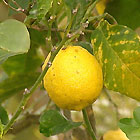Plants produce most of their annual growth over the next few weeks, so it’s the perfect time to give your garden some extra care and attention.
Spring lawn renovation
Aerate:
lots of weeds and bare patches indicate that the lawn is compacted. You can fix the problem by aerating the lawn with a steel-pronged garden fork, or hire a power aerator. Repair bare spots with extra turf or plugs, sow seed, or transplant runners from the edge of the lawn. Grass will always struggle in an area that is constantly subjected to heavy traffic, so it may be best to go with the flow and install stepping stones or paving.
Water:
using a fixed sprinkler (those with a rainmaker or arching pattern are excellent), give the lawn a good soaking once or twice a week (more frequently in hot or dry weather). How much water your lawn needs will depend on your soil type and the lawn variety you are growing, but as a general guide allow each area to be thoroughly soaked for around 20 minutes.
Fertilise:
use a complete lawn food, an organic food such as Dynamic Lifter formulated for lawns, or a slow-release lawn fertiliser such as Scotts Lawn Builder. Apply the fertiliser as evenly as possible, either by hand or using a fertiliser spreader. It is very important to water well before and after fertilising. If your lawn is very dry because of the drought, Don suggests holding off on the fertiliser until it rains.
Fertilising citrus
Some plants, including citrus and roses, are heavy feeders and really benefit from regular fertilising.
Citrus:
apply citrus food in late winter or early spring, then in late summer apply Dynamic Lifter. For a mature tree, spread 1.5-2 cups of citrus food between the trunk and the dripline (or outer rim of leaves). Citrus in tubs need small amounts of food frequently. Use citrus food or Dynamic Lifter every 4-6 weeks from spring to late summer, or use a slow release fertiliser, such as Osmocote Plus.
Roses:
use citrus or rose food (these products are almost identical) in spring, then Dynamic Lifter in late summer. Roses also love well-rotted cow manure and lucerne mulch.
Yellow gardenia
At this time of year, the leaves on gardenias tend to yellow. The traditional ‘fix’ for this is magnesium, applied as Epsom Salts dissolved in water. However, Don explained that the problem is caused by cold damage, not a mineral deficiency. Gardenias hate cold weather and the tips of the leaves yellow off through winter. So forget the Epsom Salts. Instead, give your gardenias a good feed in spring, using aged chicken or duck manure.
Other plants
Potted plants can be fed with slow-release fertilisers, such as Osmocote or Nutricote. For fast action use a liquid food such as Nitrosol, Aquasol or Thrive. For most other plants use Dynamic Lifter, slow release fertiliser, blood and bone, manures, or liquid fertilisers. Liquid fertilisers are very safe and will not burn plants (for ease of use, liquid fertilisers can be applied via a hose end sprayer).
Further reading
The September edition of the Burke’s Backyard Magazine features a comprehensive spring gardening special, with advice on new plants to try, jobs to do around the garden, and Don’s top 50 fertilising tips. The magazine is available from newsagents and supermarkets for $5.20.



